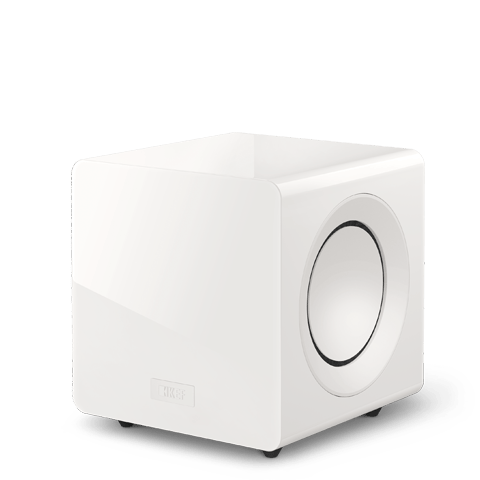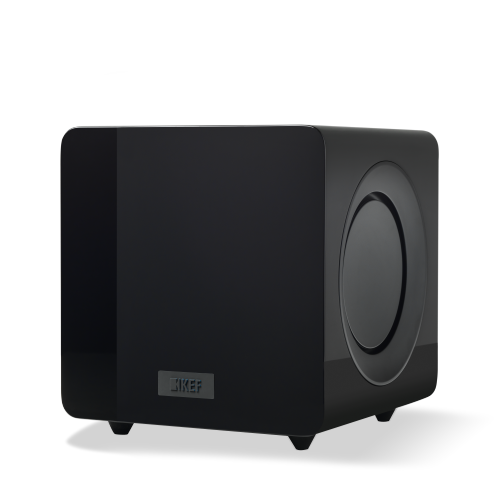A home audio subwoofer is a specialised speaker designed to reproduce low-frequency sounds between 20 and 200 Hz. It focuses solely on bass, providing depth and richness to the audio that standard speakers struggle to achieve. That’s why, when watching movies through a subwoofer system, you get a more intense, immersive experience of special effects, movements, ambient sounds and dialogues.
Common Issues With Home Listening
We know that subwoofers play a big role in amplifying movie magic but if your speakers are primarily used for music, do you really need one? Let’s take a look at some common issues faced by music lovers when listening at home:
- Lack of depth: Standard speakers deliver music but lack the deep bass frequencies, resulting in a flat and uninspiring sound.
- Imbalance: Mid and high frequencies often overpower the lower frequencies.
- Distortion: Playing bass-heavy tracks at high volumes can affect sound quality and clarity, making your music sound “muddy.”
With the right audio equipment, your favourite pastime can be profoundly elevated. Transform your music listening experience into something truly extraordinary, where the subtleties and depths of your favourite tracks can be fully appreciated. This is where the addition of a subwoofer comes into play. While they excel at enhancing movies, their benefits extend far beyond purely cinematic use.
Q: What is the difference between a subwoofer and a speaker?
Q: Why do I need a subwoofer?
Q: How does a subwoofer improve music sound?
Q: Can a normal speaker be used as a subwoofer?
This process requires a fair amount of trial and error. Our resident audio experts share some tried-and-tested tips to guide you:
1) Find an ideal location
Often, subwoofers are placed along walls or in corners out of convenience. However, these spots aren’t the best for an optimised home audio setup. Instead, try placing your subwoofer in the middle of the room or near where you usually sit. A setup closer to you reduces the need to fill the entire room with bass energy.
2) Do the subwoofer crawl
Place your subwoofer where your main listening chair usually goes. Play something bass-heavy, then crawl around the room with your head at subwoofer level until you find the spot where it sounds best. You’d be surprised at how well this works; you’ll notice significant changes in the quality and volume of the bass.
3) Consider your room’s finishes
Hardwood or carpet? Hardwood causes more noise to travel (which isn’t great if you have thin walls), while carpet helps absorb sound, preventing your neighbours from hearing everything you listen to. Want to take it up a notch? Consider traps and energy absorbers to improve your bass. Ultimately, the closer an object is to the subwoofer, the more energy it will experience.
4) Two is better than one
This might seem counterintuitive but adding a second subwoofer to your home audio setup can help reduce the amount of bass energy your neighbours hear. The second subwoofer eliminates standing waves (weak bass in your listening area but obtrusive bass elsewhere), pressurising your room to a decent listening level without overworking a single subwoofer.
KEF recommends: Stack it up for next-level bass
For a space-saving trick, try the KSK92 Subwoofer Stacking Kit, which effortlessly merges up to three KC92 subwoofers into a single, powerful unit. Sleek yet sturdy, the durable aluminium frames make stacking easy, allowing you to enjoy higher levels of audio performance without sacrificing valuable floor space.
Ideally, your speakers should be in phase with each other. When your speakers are out of phase, the signals they produce can cancel each other out, resulting in a noticeable lack of bass. That doesn’t mean your subwoofer system isn’t working, it just means your ears aren’t hearing it.
Tip 1: Size ratio
The smaller your main speakers are, the closer they should be to your subwoofer. You shouldn’t specifically hear the subwoofer; instead, the bass should feel as if it’s coming from your speakers.
Tip 2: Distance and position
The farther your subwoofer is from your main speakers, the larger the relative phase shift between them. This is why you may need to experiment with placement to achieve your desired sound quality. Try positioning your subwoofer to face your main speakers or set it up at a different angle rather than perfectly aligned. If you’re limited by cable length, consider going wireless.
KEF recommends: Convert your subwoofer to wireless mode
Retain high-quality audio without the hassle of unsightly wires. The KW1 Wireless Subwoofer Adapter Kit delivers audio up to 24bit/48kHz, offering intuitive pairing with multiple subwoofers, so you can place them wherever you like.
Tip 3: Ask a friend for help
Invite a fellow music lover to join you and take turns listening to familiar tracks while flipping the phase switch. After a few tries, you’ll likely notice an increase in bass. You can also use the phase controller to make small adjustments—just be sure to use the same passage from the song to compare the differences.
KC92: Elegant, Compact And Robust
Elevate your immersive listening experience with KC92, which delivers remarkably deep and impactful bass with exceptional precision. With its minimal, timeless design, KC92 seamlessly matches any KEF speaker, blending effortlessly into your living space.
Nestled within the subwoofer is our proprietary Music Integrity Engine (MIE), a suite of in-house coded digital signal processing (DSP) algorithms that allow our wireless HiFi speakers and subwoofers to work in perfect harmony. MIE performs incredibly fast calculations to analyse input signals; for example, the phase correction feature addresses inherent timing issues, while the iBX Intelligent Bass Extension enables our subwoofers to deliver deeper bass and greater dynamics.
Pair your KC92 with our award-winning LS60 Wireless, LS50 Wireless II or LSX II for the ultimate music listening experience.






